GPO 5 instruments overview
There are four main families of musical instrument in the modern orchestra: the strings, the woodwinds, the brass, and the percussion. Instruments within each family share common attributes and produce their sounds in a similar fashion. The strings are played with a bow or are plucked; the brass and woodwinds are blown; and the percussion instruments are struck.
The orchestra as we know it today took centuries to evolve. Since the first cavemen learned how to produce sound, musicians have organized themselves into groups. An orchestra is a group of instrumentalists who play music together. The term is commonly used to describe a large ensemble composed of strings, woodwinds, brass, and percussion. The word orchestra derives from the Greek and refers to the semi-circular space in the front of the theater where performers stood. In a modern orchestra, the players are seated in a semi-circle facing the audience and the conductor.
The combining of instrumentalists into string, brass, woodwind, and percussion sections is a relatively recent development in the evolution of the orchestra. Early orchestras first emerged over 400 years ago. They were often just an ad hoc group of musicians getting together and playing whatever instruments they had at hand. Small orchestras later accompanied operatic and theatrical performances and also played for royalty and the noble classes. In the 1600s and 1700s, the evolution of instruments accelerated and by the nineteenth century, the variety and number of musical instruments led to the need for a conductor. The golden age of the orchestra was born, and the orchestra finally emerged from its supporting role into prominence. As cities grew, the demand for musical performances increased. Concert halls were built throughout Europe and North America to showcase the orchestra. People traveled for miles to see and hear an orchestra. Composers began writing longer, more complex works for larger and more varied groups of instruments. With a wider array of instrumentation and a growing body of musical works, the orchestra continued to flourish. By the twentieth century some orchestras consisted of more than 100 full-time professional musicians. Today, most of the world’s major cities have their own symphony orchestra, which has become a symbol of cultural pride. The finest orchestras tour foreign countries and serve as musical “ambassadors” for their respective countries. Contemporary composers write orchestral music for television, film, and interactive media, as well as the concert hall.
The strings consist of four instruments—violin, viola, cello, and double bass—and are grouped into sections bearing the names of the instruments. The string instruments look very similar, but differ in size and tone. Violins have the highest voices and the brightest tone, basses have the lowest voices and darkest tones, and the cellos and violas fall in between. The string instruments all have four strings and produce sound the same way; by drawing a bow across the strings or by plucking with the fingers.
The string instruments in Garritan Personal Orchestra 5 includes a pair of Stradivari, a Guarneri, several Gaglianos, two Pierrays, two Montagnana cellos, a Testore, a Pallota viola, a Calcanius, a Klotz, a Vaillant, and a Betts, all of which were made in the seventeenth century. Visit www.garritan.com for a complete list of the string instruments in this collection. Amazingly, these string instruments have lasted hundreds of years and still have such a powerful and beautiful sound. The string instruments in the Garritan Personal Orchestra 5 library are collectively worth millions of dollars, although the true value of any fine string instrument is in its sound, which is priceless. The sounds of these exquisite stringed instruments are now at your command.
It is important to be aware of the range (the highest and lowest notes available) of each instrument. Each string instrument has a particular pitch range. The chart below shows the typical ranges of the individual string instruments as they correspond to a piano keyboard. Virtuoso players can often play beyond the typical upper range of the instrument.
| Instrument | Range |
|---|---|
| Violin |

|
| Viola |

|
| Cello |
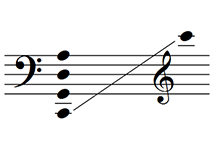
|
| Double bass |
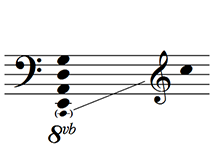
|
Aside from being sampled from some of the world’s finest instruments, the string patches in Garritan Personal Orchestra 5 are programmed in a way that allows for playability and customization. The solo patches of each member of the string family are included in the library as well as keyswitch patches. The keyswitch patches incorporate the most commonly used string articulations into one patch, with the articulations activated by a key outside the playable range of the instrument. Aside from the standard solo patches and keyswitch patches, Garritan Personal Orchestra 5 includes multiple player (Plr) instruments, each programmed in a way that allows you to build custom string sections. These Plr instruments are useful in creating unison and divisi lines where control over each instrument in the section is desired. There are buildable ensembles for each member of the string family. For more information on ensemble building, see the previous section on “Building Sections from Individual Instruments” in this manual.
Garritan Personal Orchestra 5 also includes pre-built string sections for every member of the strings family. These section samples include sustained/ legato, pizzicato, trills, tremolo, muted, and short bow articulations. There are also keyswitch instruments that combine these articulations into one patch. The articulations in the keyswitch patches are activated by a key outside the normal range of these instruments. Also included in Garritan Personal Orchestra 5 are full section patches that include all string family instruments grouped together as a way to audition sounds without loading each instrument section separately. Aggressive patches for the short bow and sustained string patches are included for when a more aggressive sound is needed. These patches should be used when a brighter or harder articulation is desired as the sound of the attack is greater with these instruments.
New to GPO 5, the renowned Garritan Orchestral Strings are included as a separate category, including large sections, small sections, and solo instruments. The violin section is composed of two Stradivari, a Guarneri, a Vuillaume, three Gagliano, a Testore, a Pierray, a Calcanius, a Klotz, a Vaillant, an Antoniazzi, a Pagani, a Pagez, a Gemünder, a Homolka, a Faruolo, a Peresson, a Gatano Gearta, an unknown French violin, an unknown Hungarian Gypsy violin, an unknown German violin, and an unknown Hungarian violin. The viola section includes a Pallotta, Sgarabotto, Geoffrey Ovington, Mönnig, Newton, Lee, Frirsz, Vincenzo Cavani, Alexander Tulchinsky, and Dante Baldoni. The cello section includes two Montagnana, a Thomas Dodd, a Pierray, a Betts, a VanLeuwen, a Deconet, and an unknown Italian cello. The double bass section includes a Testore restored by Luigi Montavani, two Jacquet, a German flatback bass, a Krutz, a Pöllmann, an unknown Czech bass, and an unknown Tyrolean bass.
The Garritan Orchestral Strings section strings patches are grouped into three broad categories within each instrument section: long bows, short bows, and additional techniques. "Long Bows" includes techniques played with single, sustaining strokes characteristic of legato playing. "Short Bows" includes techniques played with brief, separate alternating strokes characteristic of détaché playing. "Additional Techniques" includes a combination of bowed and non-bowed articulations, such as col legno, pizzicato, ricochet, and harmonics for a range of both traditional and avant-garde techniques. In addition, the section strings include full strings, several special effects patches, and keyswitch groups that encompass all of the techniques found in the individual patches.
Many of the Garritan Orchestral Strings solo string patches include sampled body resonance. Similar to the Convolution reverb effect, these body resonances are samples of actual string instrument bodies, automatically adding an extra layer of realism to these sounds. The following Solo Strings patches include body resonance by default:
- Violin 1 KS
- Violin 1 Vibrato
- Violin 1 Col Legno
- Violin 1 Detache
- Violin 1 Martele
- Violin 1 Sfz
- Violin 1 Spiccato
- Violin 1 Staccato
- Viola 1 KS
- Viola 1 Vibrato
- Viola 1 Trem
- Viola 1 Spiccato
- Cello 1 KS
- Cello 1 Vibrato
- Cello 1 Trem
- Cello 1 Detache
- Cello 1 Spiccato Short
- Bass 1 KS
- Bass 1 Vibrato
- Bass 1 Spiccato
In order to obtain the best results when using Garritan Personal Orchestra 5 it is imperative to use the built-in programming for the samples. While the samples are certainly playable without understanding the programming behind them, it is only when the programming is understood and utilized that your string solo and ensemble passages will truly come alive. Listed here is the programming included in the Garritan Personal Orchestra 5 solo and ensemble string samples and how it is activated with common MIDI controllers.
Directory of GPO 5 instrument patches: Solo strings
Directory of GPO 5 instrument patches: Section strings
Directory of GPO 5 instrument patches: Garritan Orchestral Strings
The Woodwind family consists of a wide variety of instruments, each with its own unique sound. Whereas the four members of the string family produce sounds in a similar fashion, woodwinds produce their sound differently from one another. As a result, the bassoon has a very different tone than a flute and neither resembles the sound of a clarinet. Quality woodwind instruments sampled in Personal Orchestra include Haynes flutes, Selmer clarinets, and Heckel bassoons.
Most of the woodwind instruments really are made of wood and some are made of metal (the flutes, historically, were made of wood but are now made with metal). Woodwind instruments produce their sound by having air blown through a hollow tube. Holes along the length of the body are opened or closed using the fingers (or small pads that are part of a keyworks mechanism), producing varying pitches. With the exception of the flute family, woodwind instruments require reeds to produce their sound.
Woodwind instrument ranges are not absolute and virtuoso players can often play beyond the typical upper range of the instrument.
| Instrument | Range |
|---|---|
| Piccolo |
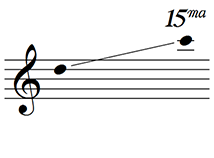
|
| Flute |
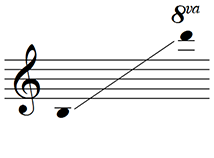
|
| Alto flute |
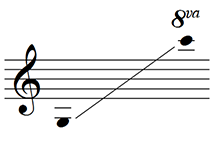
|
| Bass flute |

|
| Oboe |
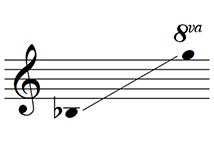
|
| English horn |
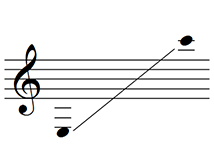
|
E clarinet clarinet |
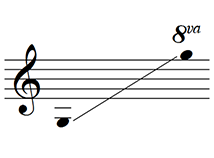
|
B clarinet clarinet |
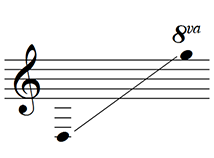
|
| Bass clarinet |
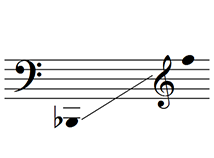
|
| Contrabass clarinet |
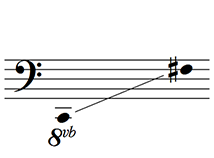
|
| Bassoon |
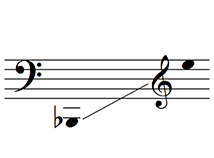
|
| Contrabassoon |
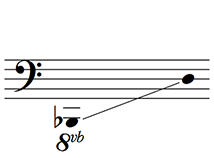
|
The wind instrument samples in Garritan Personal Orchestra 5 are expressive and beautiful. Whether you choose to use them in a solo context, in small intimate ensembles, or in vast orchestral pieces, they are built to suit your every need quickly and painlessly. Included in the library are solo and ensemble versions of all the major instruments in the wind instrument family with some surprises that you would expect from larger, more expensive libraries. For playability, there are keyswitch versions of the flute and piccolo.
In order to obtain the best results when using Garritan Personal Orchestra 5 it is imperative to use the built-in programming for the samples. While the samples are certainly playable without understanding the programming behind them, it is only when the programming is understood and utilized that your woodwind passages will truly come alive. Listed here is the programming included in the Garritan Personal Orchestra 5 solo and ensemble woodwind samples and how it is activated with common MIDI controllers.
The brass instruments in a modern orchestra include variations of the French horn, the trumpet, the trombone, and the tuba. Each possesses a unique color and range, from the bright piercing sound of the trumpet to the deep, dark tones of the tuba. The brass section is typically seated between the woodwind and percussion sections.
Similar to the woodwind instruments, sounds are produced by air being blown into a bowl- or funnel-shaped mouthpiece connected to a hollow metal tubing that terminates in a bell. Holes in the tubes are opened and closed by valves or a slide, which produce changes in pitch. The vibrating lips of the player have the same function as the reeds in the woodwind instruments.
Brass instrument ranges are not absolute and virtuoso players can often play beyond the typical upper range of the instrument. Good brass players can also play pedal tones. Pedal tones are the lowest possible notes playable with any given fingering and take a great deal of control to produce.
| Instrument | Range |
|---|---|
| Piccolo trumpet |
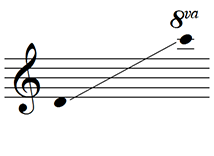
|
B trumpet trumpet |
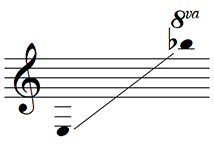
|
| French horn |
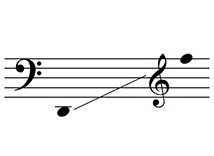
|
| (Tenor) trombone |
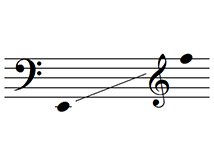
|
| Bass trombone |
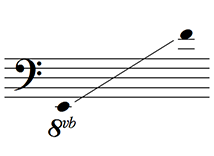
|
| Tuba |

|
| Contrabass tuba |
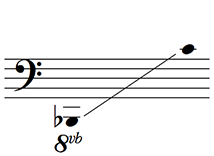
|
The brass in Garritan Personal Orchestra 5 have been exquisitely captured and allow for a very dynamic brass section in your MIDI orchestration. In addition to the standard solo patches included in Garritan Personal Orchestra 5, there are also ensemble patches that allow the MIDI orchestrator to custom size his brass section to meet the need of the composition.
In addition to these ensemble instruments there are brass overlays and mutes as well as aggressive patches. The overlays, sampled at the f or ff level, can be layered with the solo and ensemble instruments to achieve a fuller, more massive section sound. The aggressive patches are useful in adding a punch to the brass section by increasing the hardness of the attack. For more information about the ensemble building feature of Garritan Personal Orchestra 5, see the section on “Building Sections from Solo Patches” in this manual.
In order to obtain the best results when using Garritan Personal Orchestra 5 it is imperative to use the built-in programming for the samples. While the samples are certainly playable without understanding the programming behind them, it is only when the programming is understood and utilized that your brass passages will truly come alive. Listed here is the programming included in the Garritan Personal Orchestra 5 solo and ensemble brass samples and how it is activated with common MIDI controllers.
ProjectSAM Brass
Garritan Personal Orchestra includes many patches from ProjectSAM, the most respected orchestra brass samples on the market. Included are samples from SAM Horns, SAM Trombones, SAM Trumpets and SAM Solo Sessions. Known for their ambient, cinematic sound, ProjectSAM Brass instruments are regularly used in film, TV and music. For Garritan Personal Orchestra 5, the ProjectSAM brass sections and solo instruments were streamlined and programming modified to blend with the other instruments and were then optimized for the ARIA Player. The sounds are available both as individual technique patches and in combined "KS" patches utilizing keyswitches.
The percussion instruments are often the loudest members of the orchestra and are seated at the back of the orchestra. The instruments of the percussion family are played by being hit, shaken, or scraped. Percussion literally means “hitting of one body against another.” The percussion section provides a variety of rhythms and tonal textures in an orchestra. It is also the most varied section, and since there are many different percussion instruments, players often master a variety of instruments.
Percussion instruments are divided into two groups: pitched and unpitched. Unpitched instruments have an indefinite tone—like a hand clap or thud—such as the bass drum, snare drum, maracas, cymbals, or gong, to name but a few. Pitched instruments, such as the xylophone, timpani, marimba, tubular bells, and others, play specific pitches.
Unlike the other instruments of the orchestra, the ranges of pitched percussion instruments are absolute, and players cannot usually play beyond the range of the instrument without specific techniques.
| Instrument | Range |
|---|---|
| Glockenspiel |
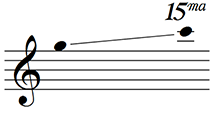
|
| Handbells |
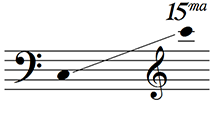
|
| Xylophone |
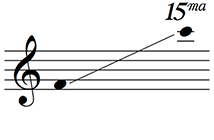
|
| Vibraphone |
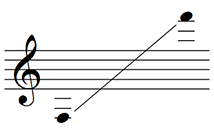
|
| Crotales |
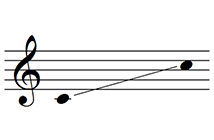
|
| Tubular bells |
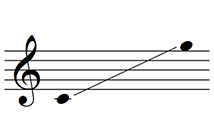
|
| Grand marimba |

|
| Timpani |
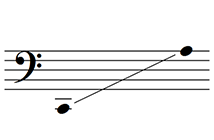
|
Garritan Personal Orchestra 5 places a varied collection of percussion instruments at your disposal. Almost all of the Garritan Personal Orchestra 5 percussion instrument patches are keyswitch instruments with the exception of the cymbals, wind machine, and the basic orchestral percussion combo patch.
In addition to the pitched percussion instruments, Garritan Personal Orchestra 5 includes several dedicated unpitched percussion patches. These include a bass drum with adjustable fundamental, a set of orchestral cymbals, snare and side drums, and a wind machine.
There are also two categorical combination patches of multiple percussion instruments. Basic Orchestral Percussion includes the most commonly used percussion instruments, including bass drum, timpani, side drum, snare drum, gongs, cymbals, and triangle. Percussion Toys includes many hand percussion and other sounds, including cowbells, gourds, shakers, tambourine, claves, ratchet, sleigh bells, mark tree, and triangle.
The programming in the Garritan Personal Orchestra 5 percussion is not as involved as that as of the sustained instruments due to the nature of these instruments. Some of these controllers are universal across all percussion instruments while some pertain to select instruments or types of instruments.
The harp is an ancient instrument. Many keyboard instruments evolved from the harp. The harp consists of a series of strings stretched over a triangular frame. The harp is played by plucking the strings with the fingertips. The concert harp has seven pedals, each one representing a note of the scale. The pedals adjust the length of the strings, with all its octaves, either a semitone up or down. The harp can have a range of up to seven octaves. Harps are known for rapid arpeggiated runs and glissandi that create distinctive color. The two harps that are included in the Garritan Personal Orchestra 5 collection are a Venus Grand Concert harp and a Wurlitzer Concert harp, circa 1920s.
Various keyboard instruments are often included in orchestras. Keyboards have a standard chromatic key arrangement of black and white keys playing notes a semitone apart. Keyboards have been with us for over 600 years, first appearing in organs and later in clavichords, harpsichords, and pianos. In Garritan Personal Orchestra 5, high-quality keyboard instruments were sampled. A Steinway® Concert Grand Piano was sampled at two dynamic levels (Steinway name used by permission). The harpsichord is a double manual French harpsichord, built by Hubbard, and the celesta was manufactured by Mustel. The Concert Pipe Organ is a German Baroque pipe organ built by Rudolf von Beckerath for Saint Joseph’s Oratory of Mount Royal in Montreal. It has three manuals and pedals, containing 11 individual stops and combinations.
| Instrument | Range |
|---|---|
| Celesta |
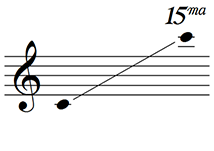
|
| Glass armonica |
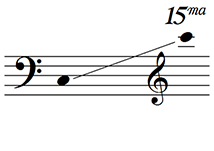
|
| Harpsichord |
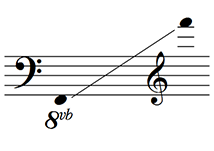
|
| Concert grand piano |

|
| Concert harp |
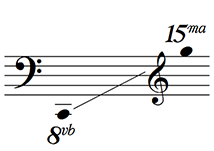
|
| Concert pipe organ (including pedal stops) |
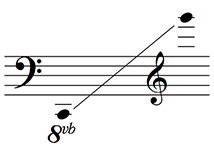
|
| Choir |
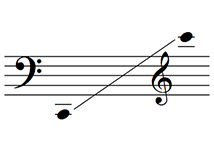
|
It has been said that the keyboard and harp instruments included in Garritan Personal Orchestra 5 could stand alone in libraries of their own. It is true that these instruments are among the finest quality and complete this library’s vision of offering an orchestra for every musician.
Directory of GPO 5 instrument patches: Keyboards
Directory of GPO 5 instrument patches: Pipe organ
Directory of GPO 5 instrument patches: Harps
Directory of GPO 5 instrument patches: Choir
Celesta and glass armonica
These two instruments share similar programming but give entirely different sounds. The celesta is a beautiful bell sounding instrument utilizing metal plates like chimes, while the rare glass armonica is a sound unique unto itself. GPO 5 includes an additional glass armonica patch for variation.
Harpsichord
The harpsichord’s programming is also simple yet effective. On top of the simple programming, all the ‘stops’ are available on one patch through a keyswitch.
Pianos
This is perhaps the easiest instrument to play in Garritan Personal Orchestra 5. The programming is the easiest to grasp and allows for a fully functional concert piano experience. An 88-note MIDI keyboard is recommended to play all the notes. Included in Garritan Personal Orchestra 5 are a Steinway Model D "Concert Grand" and a Model B "Music Room Grand", each with new instrument controls.
The Concert D Grand Piano gives you all the raw power of this magnificent instrument in a performance hall, while the Intimate D uses the una corda pedal with a close mic perspective for a radically different, much softer tone. The Resonant B gives the impression of a smaller venue, offering the instrument's rich, wide sound in a studio or scoring room.
Harps
Because of the way a harp is played, Garritan Personal Orchestra 5 offers different types of harp patches. There are the standard chromatic harp instruments for single plucked notes, the glissando harps to emulate harp glissandi, the harp harmonics patches for harp effects to add realism, and the harp keyswitch instruments so that the user has access to all these types of patches in one convenient instrument. The Glissando Harp patches map notes to the white keys of the keyboard and provide controls to emulate the pedal positions of a harp, so that you can "strum" the keyboard to achieve realistic glissandi.
GPO 5 adds a Lyon and Healy Concert Grand harp, which can be controlled chromatically or in a special pedal mode, and also contains a harmonics keyswitch. The pedal mode, also available in two separate Pedal Mode patches, involves sliders on the Controls view that set the chromatic alterations for each pitch class. These sliders can also be controlled using MIDI CC messages. The legacy method of controlling glissando harp patches by loading MIDI data files is also included for project compatibility.
Concert pipe organ
The organ does not use velocity to control the volume/timbre characteristics of the instrument. Since the pipe organ is controlled by wind pressure from the bellows, this works quite well and lends to a more satisfying experience when playing live. The numerous organ patches in Garritan Personal Orchestra 5 all have a unique and particular sound. Extra controls have been added to the pipe organ instruments to increase tonal possibilities. Using the programming listed below you should be able to create convincing organ pieces quickly and efficiently.
New to GPO 5, the Custom Organ Console allows you to play up to 12 stops at once through a single instrument slot, giving you unprecedented control over mixtures and combinations. Load an individual stop into any of the 12 slots provided by the console, organized into three rows by high, mid, and low registers; the ARIA Player allows you to switch that slot on and off and adjust its volume. For advanced users, each slot can also be controlled by three dedicated MIDI CC controllers: one controller per slot to choose which organ stop is loaded in that slot, one controller per slot to enable or disable that stop, and another controller per slot to adjust the relative volume of that stop (similar to drawbars on an electric organ). You can even control the Custom Organ Console within a notation program such as Finale; for details, see Using the Custom Organ Console in a notation program. The Custom Organ Console also includes new controls for Swell, Chiff, and Tremolo Speed and Amount.
Choir
Garritan Personal Orchestra 5 introduces a much wider range of vocal ranges and timbres. While you can use the Full Choir KS patch to play a unified "Aah" or "Ooh" sound across the full vocal range, GPO 5 offers separate patches for specific voice parts, each with their own unique samples. Choose between Sopranos (including vibrato and non-vibrato solo patches), Altos, Tenors, and Basses, as well as Boys Choir and Children's Choir; each of these includes multiple vowel sounds. The Full Choir Lite KS patch is also provided for legacy support.
Building sections from solo patches
In orchestral scores, composers often write multiple parts for one type of instrument to achieve chords and harmony. With the larger sections, such as the strings, there can be many players on a single part. However, each individual player will still have his or her unique style and phrasing.
With Garritan Personal Orchestra 5, it is possible to simulate the individual players in an orchestra. You can build instrumental sections, one instrument at a time, exactly the way you want. You can position the players in almost any arrangement on the stage. You can change the layout for a symphony orchestra, a baroque orchestra, or a chamber orchestra. Smaller groups such as concerto layouts, duos, trios, and quartets are also possible.
This is a unique and intuitive approach to MIDI orchestration. When you create a section from separate instruments performed and recorded individually, with variations in timing and expression, achieving a very realistic performance becomes much easier.
Garritan Personal Orchestra 5 includes a great number of instruments that can be employed as individual players in a section environment. Most instruments (brass, woodwinds, and solo strings) have derivative ensemble player (Plr) instruments. These are solo instruments designed for building ensemble sections. The Plr instruments can be used to create custom-sized ensembles while keeping resource demands to a minimum. Ensemble instruments are panned to slightly different seating positions but can be changed according to the wishes of the user. The ensemble player (Plr) instruments do not share samples with each other and can therefore be played together without phasing problems (avoid mixing Solo and Plr patches of the same instrument, however). Garritan Personal Orchestra 5’s large string section patches can be conveniently used rather than building a large string section of your own. Nevertheless, multiple solo Plr string instruments will also allow you to create string sections of various sizes.
As an example, if you want a horn section, load in the first, second and third player (Plr) horns to get your section. A second set of Plr horns will provide the fourth, fifth and sixth players. The “overlay” patches can also be used to make the section sound even bigger with greater control over brightness at louder levels. Thus, you can create your section playing in unison, playing separate parts or playing divisi with unique expression and phrasing from each loaded instrument.

